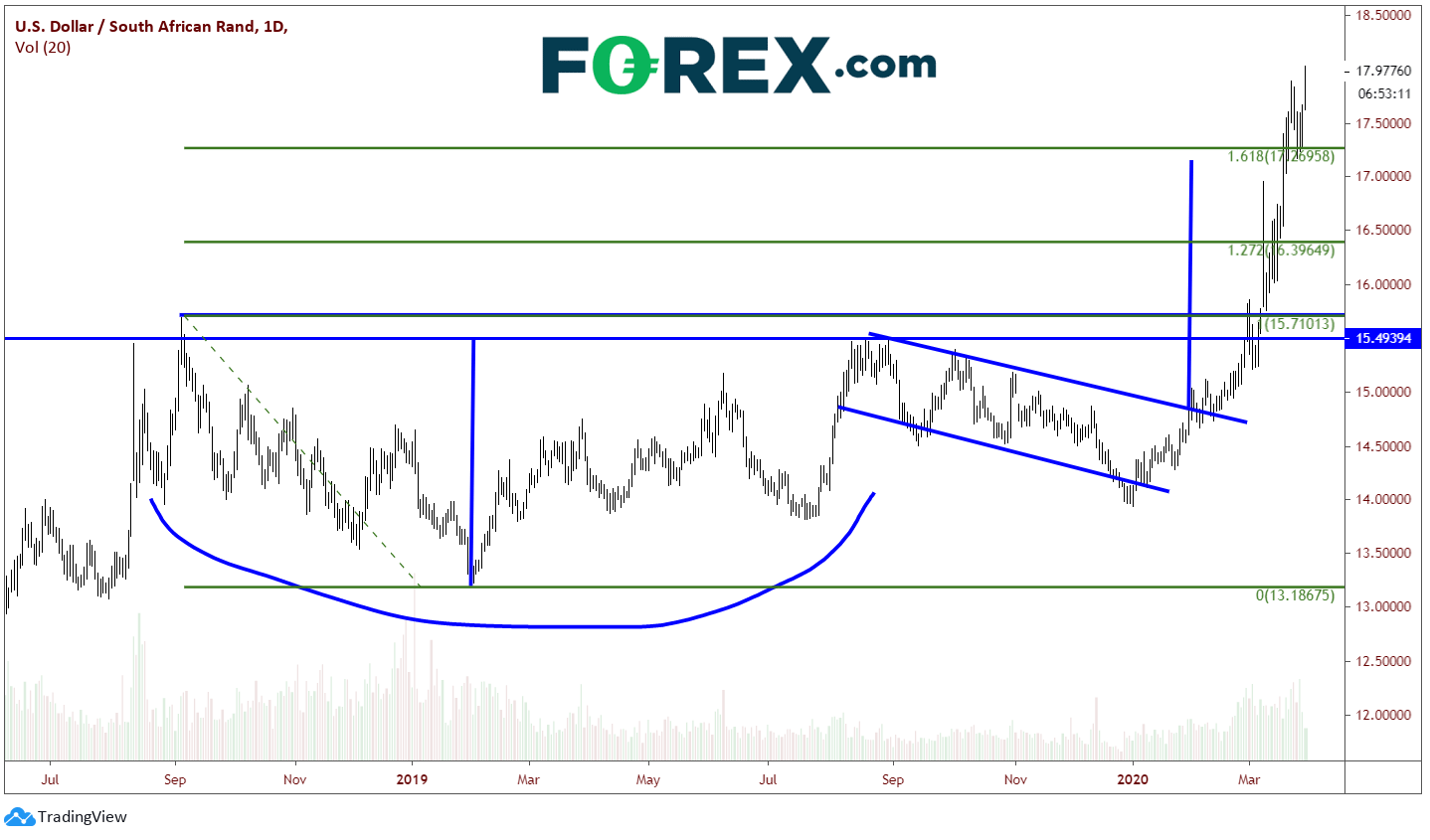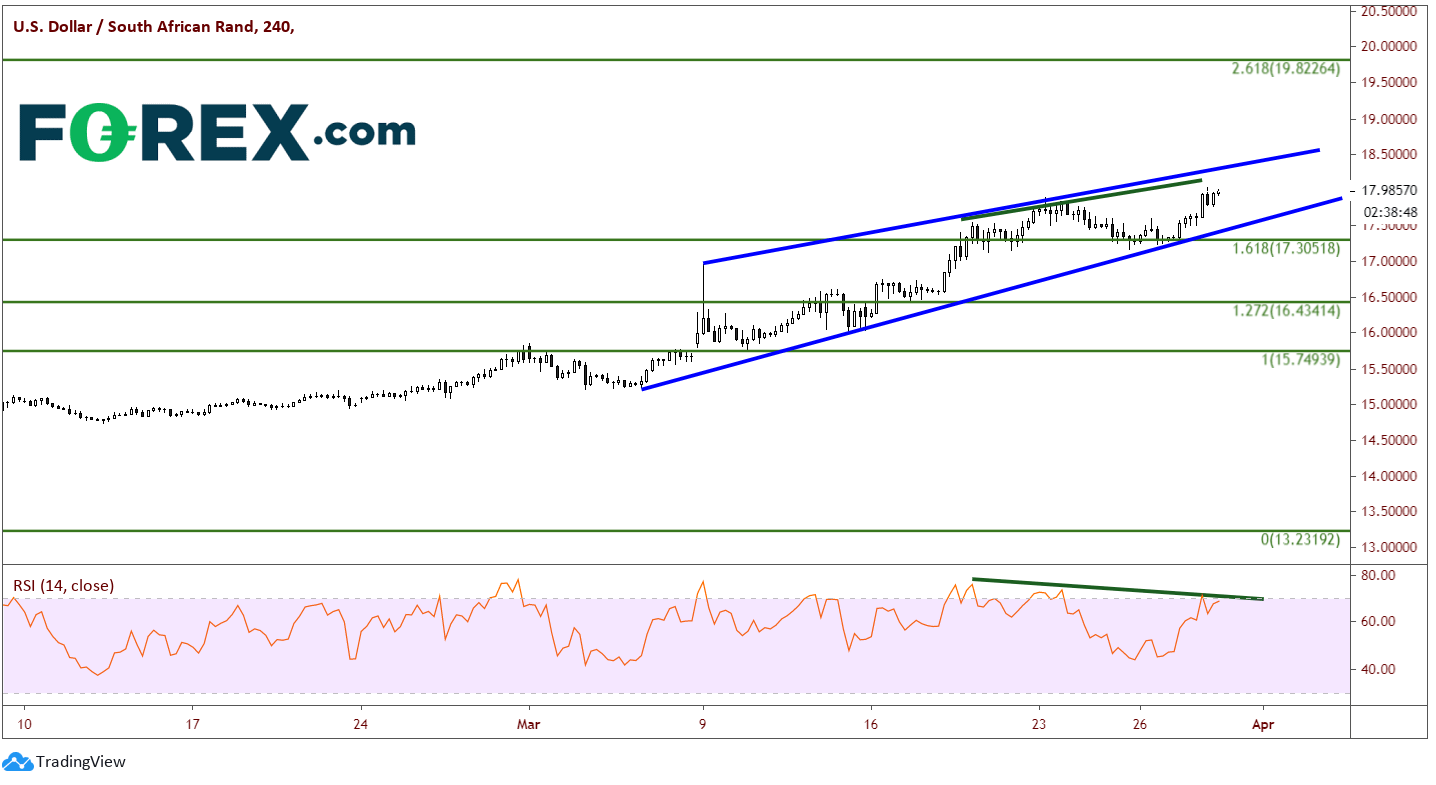
The South African Rand fell to 18.05 vs US Dollar as Moodys cut the country’s rating to junk, one level below investment grade, and kept the outlook negative. This is the first time the USD/ZAR as ever been above 18.00. Moodys joined S&P and Fitch with ratings below investment grade for South Africa. The ratings firm discussed a “continuing deterioration in fiscal strength and structurally very weak growth”. The downgrade came after South Africa began a three-week country lockdown to try and stop the spread of the coronavirus.
USD/ZAR was in a cup-and-handle formation on a daily timeframe since September 2018, breaking out of the handle in early February. The target for a cup-and-handle formation is the depth of the cup, added to the breakout level from the handle, near 17.15. The emerging market pair reached its target in mid-March, as well as, the 161.8% extension level from the highs on September 15th, 2018 to the lows of February 1, 2019 at 17.25. With the break above 18.00 today, the pair broke its previous all-time highs last week near 17.88.

Source: Tradingview, FOREX.com
On a 240-minute time frame, although it looks like the sky is the limit for USD/ZAR, the pair is currently putting in a 3-drive pattern, in which the price makes 3 higher highs and the RSI makes 3 lower highs. This is an indication of a possible reversal in price. In addition, the pair has formed a rising wedge formation, however it still is in the middle of the wedge and doesn’t seem to be breaking down anytime soon. Bulls will be looking to buy dips between horizontal support at 17.60, down to the rising trendline of the wedge near 17.45. Below that, support crosses near the 161.8% retracement level (now acting as support) near 17.25. Resistance is near the top trendline of the rising wedge at 18.30. As this is all-time new highs, it is difficult to find the next resistance however the Fibonacci extension of 261.8% is 19.82.

Source: Tradingview, FOREX.com
As the coronavirus continues to spread throughout the world, many emerging market countries will also need to “lockdown”. Many of these countries were already in economic trouble, and the coronavirus couldn’t have come at a worse time. As funds flow into the US Dollar and out of less stable economies, such as South Africa, watch for a continued move lower in emerging market currencies vs the US Dollar (ie USD/ZAR higher)



